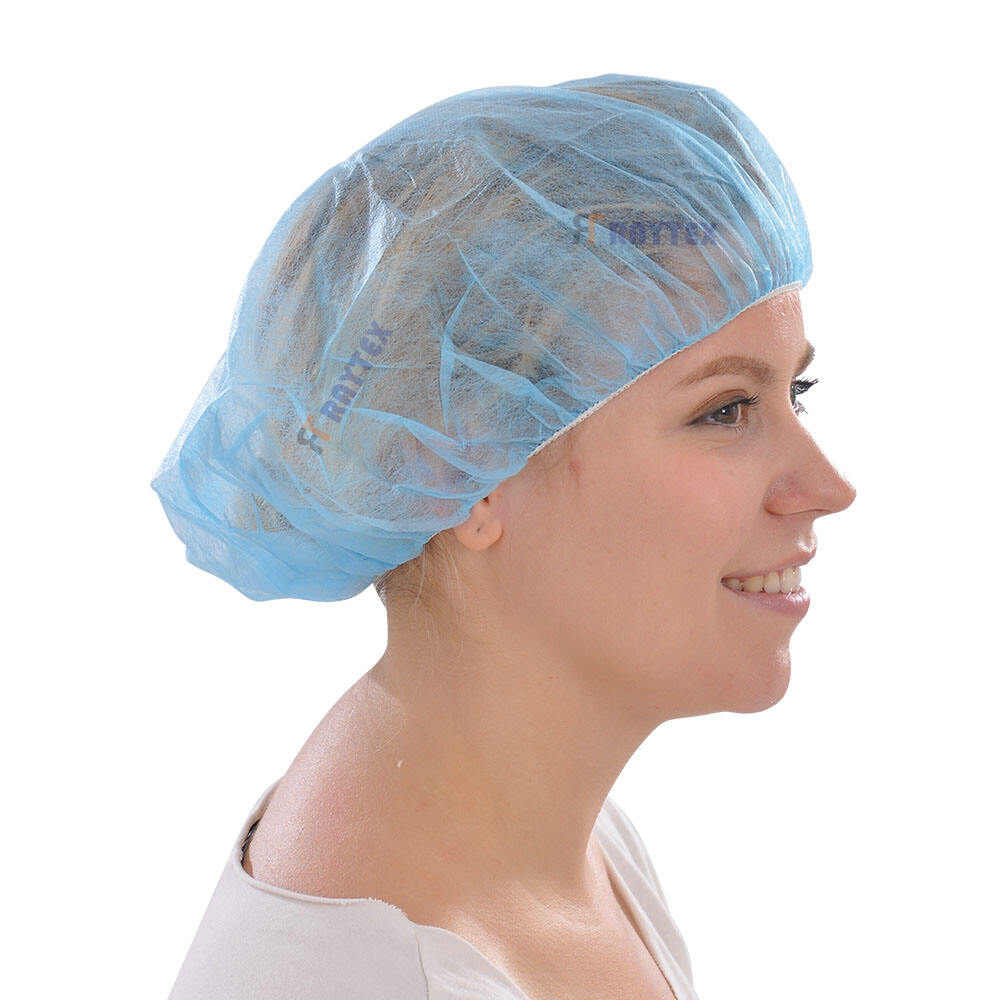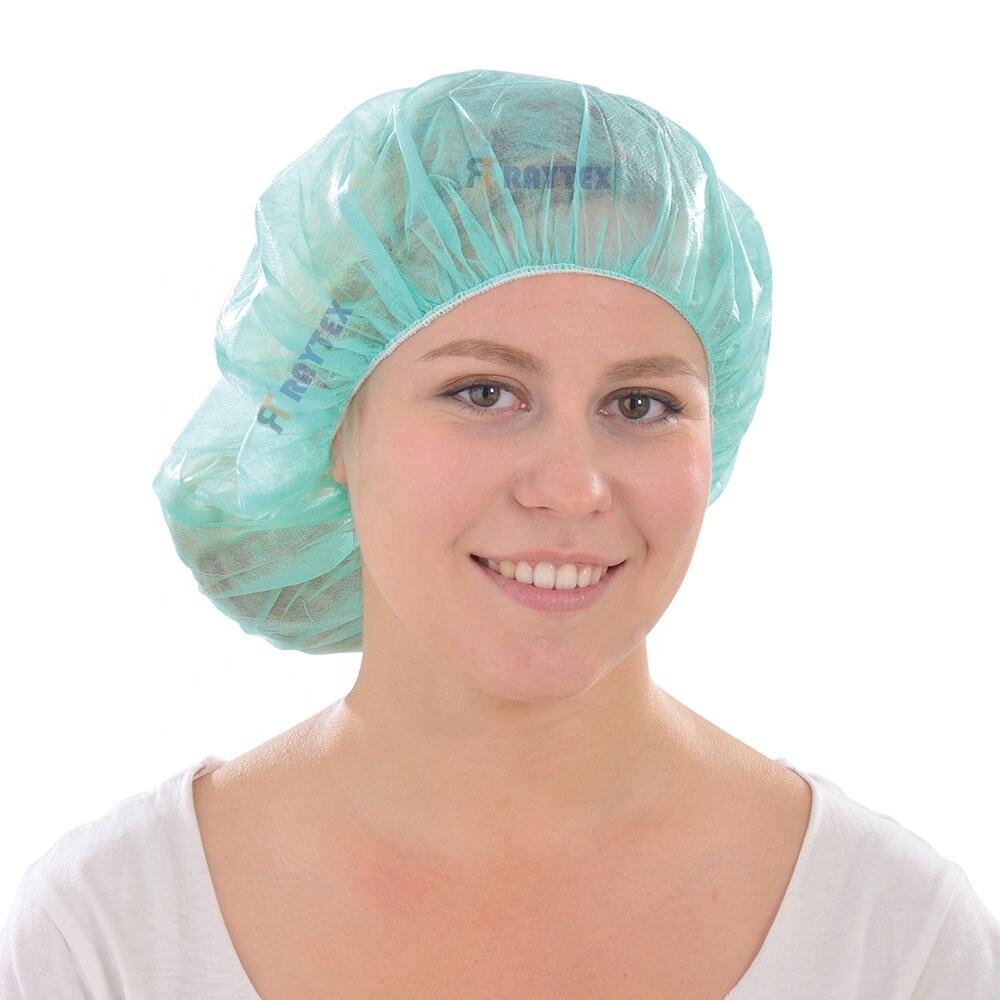Bouffant caps for agricultural product processing areas are essential hygiene tools designed to prevent contamination of crops, fruits, vegetables, and other agricultural products during processing, packaging, and sorting. These caps serve as a critical barrier against hair, dandruff, and other particulate matter that can harbor bacteria, fungi, or foreign substances, ensuring the safety and quality of agricultural goods before they reach consumers. Constructed from lightweight, breathable non-woven materials such as polypropylene (PP), these caps feature a voluminous, pouch-like design that accommodates various hair lengths and styles, from short hair to long braids or buns, without causing discomfort during extended shifts in often warm processing facilities. The non-woven fabric is chosen for its low-linting properties, ensuring it does not shed fibers that could contaminate produce, and its breathability helps prevent overheating, a key consideration for workers engaged in manual sorting or packaging tasks. A secure elastic band at the edge of the cap creates a tight seal around the hairline, preventing hair from escaping and ensuring full coverage, even during active movement such as bending, reaching, or operating machinery. This design minimizes the risk of hair falling into processing equipment or onto agricultural products, which could lead to product recalls or regulatory non-compliance. Compliance with food safety standards is paramount, and these bouffant caps adhere to regulations such as FDA 21 CFR 177.1520 (for food-contact materials) and EU 10/2011, ensuring they are free from harmful chemicals, dyes, or additives that could migrate into agricultural products. They are often disposable to eliminate the risk of cross-contamination from reusable alternatives, which can harbor residues from previous use, and align with Good Agricultural Practices (GAP) to maintain hygiene throughout the processing chain. Additionally, these caps are often color-coded to distinguish between different processing zones (e.g., raw vs. washed produce), supporting strict segregation protocols and reducing the risk of cross-contamination between stages. By integrating bouffant caps into agricultural processing facilities, operators not only protect their products from contamination but also demonstrate compliance with global food safety standards, enhance consumer trust, and reduce the likelihood of costly product losses due to hygiene-related issues.


